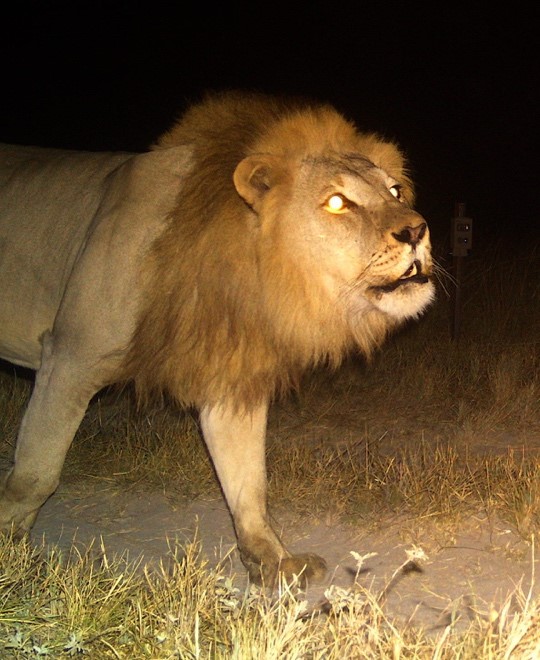News
A new way to record lion roars and what it can tell us about the influence of environmental features on lion vocal behaviour
The long-distance roar of an African lion is an important behavioural trait that allows individuals to maintain territorial boundaries and to locate distant group members. Studying the species’ vocal behaviour is challenging as lions roar mostly at night and are difficult to follow in areas of thick vegetation. Matthew Wijers, as part of his University of Oxford DPhil research, with colleagues at WildCRU and collaborators from the University’s Computer Science Department, designed and tested animal-borne and passive audio recording devices to facilitate non-invasive acoustic monitoring of the species.
This new paper presents findings that show attaching an acoustic biologger (audio recording device) to a lion GPS collar can be an effective means of recording lion roars remotely but due to the high-power consumption of these devices, only a few days of data can be collected. Consequently, obtaining sufficient data on the spatial distribution of roars has rarely been achieved and has therefore limited opportunities to investigate how environmental factors might influence lion vocal behaviour.
Motivated by these limitations, we developed a novel approach to detect roars from lion body movements. Movement data can be recorded at high resolutions (many times per second) for several months using accelerometer biologgers which require much less power than audio recording devices. We first obtained concurrent audio and accelerometer data from 8 lions fitted with acoustic-accelerometer biologgers and used this information to train a machine learning algorithm to detect roars from movement data alone. We then used this algorithm to automatically label roar events in a long-term accelerometer dataset obtained from 7 territorial male lions in southern Zimbabwe. This approach resulted in a dataset of 990 roars which we could then use to investigate how lion vocal behaviour is influenced by atmospheric conditions and home range geography.
Our results revealed that the likelihood of a lion roaring was negatively related to wind speed and temperature and positively related to absolute humidity which suggests that lions prefer to roar under conditions with lower sound attenuation that allow low-frequency vocal signals to travel further. In line with other studies, we also found that lions avoided roaring beyond their home range boundary, likely to avoid conflict with neighbouring individuals. Within the core of their home range, however, lions were more likely to roar repeatedly when closer to rivers and water points but strongly avoided doing so when near these features outside of their home range. Water points are known to represent valuable territory resources for lions and thus increasing vocalization effort closer to these features is likely a strategy to deter potential competitors.
Wijers, M., Trethowan, P., du Preez, B., Chamaillé-Jammes, S., Loveridge, A. J., Macdonald, D. W., & Markham, A. (2021). The influence of spatial features and atmospheric conditions on African lion vocal behaviour. Animal Behaviour, 174, pp.63-76.
-
 Copyright: Wesley Gush
Copyright: Wesley Gush -
 Lion roaring - credit: Andrew Loveridge
Lion roaring - credit: Andrew Loveridge -
 Lion roaring - credit: Andrew Loveridge
Lion roaring - credit: Andrew Loveridge





